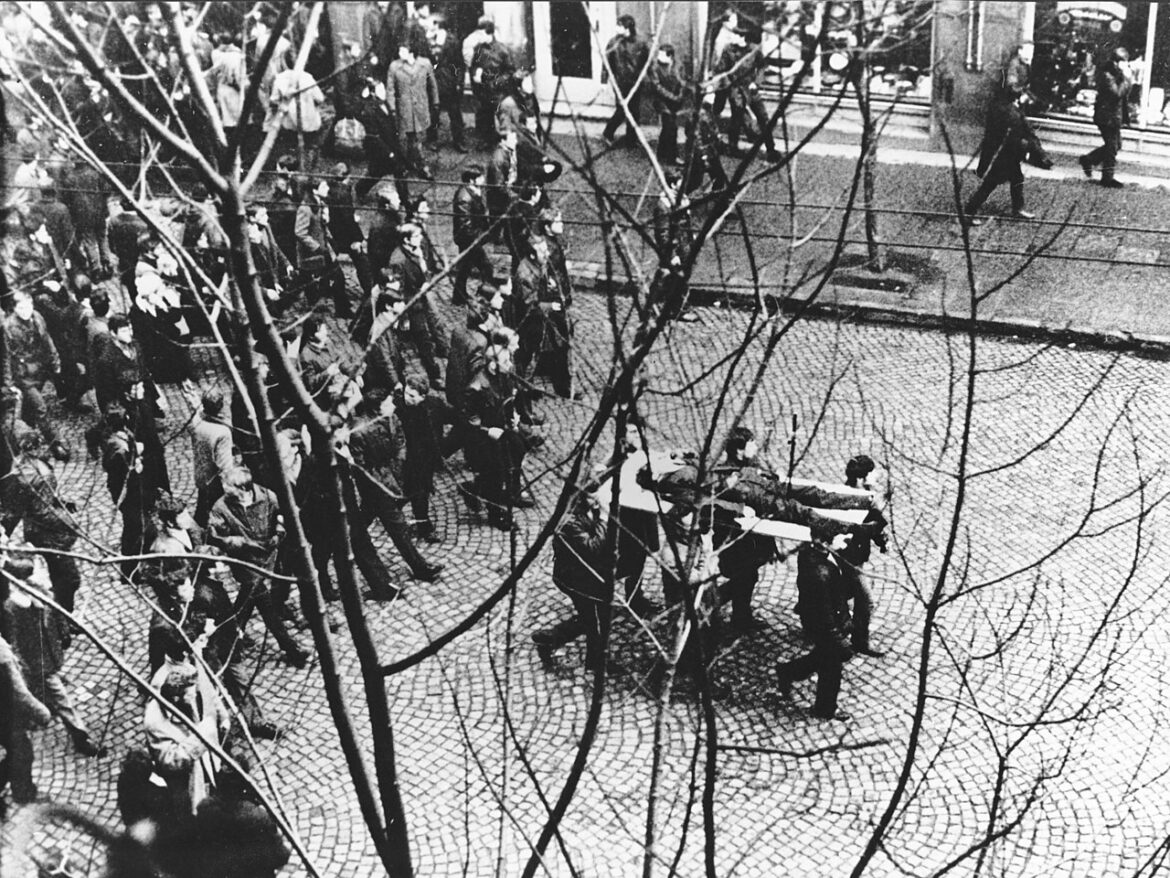On 14 December 1970, a wave of strikes broke out in the People’s Republic of Poland, caused by drastic price rises introduced shortly before Christmas. The communist authorities deployed army units to suppress them, allowing soldiers to use firearms. As a result, 45 people were killed and more than 1,000 injured.
The late 1960s saw the culmination of a political and economic crisis in communist-ruled Poland. In an attempt to improve the economic situation, the authorities decided to introduce price rises mainly for basic foodstuffs. The communist authorities, headed by Władysław Gomułka (1905-1982), may have hoped that the public would not protest, given the agreement signed a few days earlier, on 7 December 1970, with the Federal Republic of Germany on the normalisation of relations and recognition of Poland’s border on the Oder and Lusatian Neisse rivers.
The price rises hit the lowest earners above all. Their impact was exacerbated by the fact that they were introduced in complete surprise and 11 days before Christmas.
Already on Monday 14 December 1970, the first plants on the Coast went on strike. The protests began at the Lenin Shipyard in Gdansk. The strikers demanded the management of the plant to withdraw the introduced rises. This demand was not met, so the shipyard workers walked out of the plant gates and headed for the headquarters of the local communist party, the Polish United Workers’ Party (PZPR). There, they wanted to convey their demands to Alojzy Karkoszka, the 1st Secretary of the Provincial Committee (KW) of the PZPR, who was in Warsaw at the time.
The crowd of protesters was steadily growing, as strikers from other Gdansk factories were arriving all the time. A peaceful march through the streets of Gdansk was interrupted at around 4pm by an attack by Civic Militia (MO) units. Street fighting ended in the night hours.
The next day the clashes flared up again and MO officers fired at the protesters using live ammunition. There was regular fighting near the headquarters of the Municipal Militia Headquarters in Gdansk. The militia received support from military units equipped with tanks, armoured transporters and helicopters. In the course of the fighting, the building of the Central Committee of the Polish United Workers’ Party was set on fire. In the clashes, six protesters were killed, several hundred people were injured, the communist forces detained around 500 people. Another two people were killed in the morning of the next day near one of the shipyard gates when the army and militia cordoned off the plant, thus preventing people from going out onto the streets of Gdansk. The strikers remained in the shipyard, declared a sit-down strike and formed a strike committee. The situation on the streets began to calm down. In the evening, through the media, Deputy Prime Minister Stanisław Kociołek called on people to return to work.
As it turned out the next day, the authorities’ appeal became a death trap for many workers. On the morning of 17 December, workers commuting by train, getting off at the Gdynia-Stockyard station, encountered a blockade by the army and the police that prevented them from reaching the Gdynia-Paris Commune Shipyard. The crowd grew larger and larger as trains brought in more shipyard workers going to work as called for by Kociołek. The forces of order soon began shooting at the defenceless crowd. More workers were killed and many wounded.
Soon, unequal battles between strikers and the communist forces began in the streets of Gdynia, as they had been earlier in Gdansk. There were further fatalities. One of these was 18-year-old Zbigniew Godlewski, who was killed while returning from a rally near the PZPR City Committee in Gdynia. His body was carried by protesters on dismantled doors, which became a symbol of the events of December 1970 and the inspiration for the ‘Ballad of Janek Wiśniewski’.





